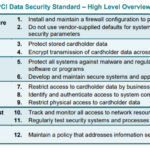In the ever-evolving digital landscape, the constant emergence of new and unknown types of malware poses a great threat to our personal and professional information. As we entrust our security to antivirus software, it becomes crucial to understand how these tools adapt to these unfamiliar threats. With an intricate web of algorithms, heuristics, and machine learning capabilities, antivirus software seeks to stay one step ahead of the cybercriminals. By continually analyzing and updating its extensive virus definitions, these software programs work tirelessly to protect our devices and keep our digital lives safe and secure.
Understanding Antivirus Programs
Definition and Importance of Antivirus Software
Antivirus software refers to a program designed to protect your computer from malicious software, commonly known as malware. As technology advances, so does the sophistication of malware, making it crucial to have effective antivirus software installed on your device. It acts as a security guard, scanning files and programs for any suspicious activity or potential threats. The importance of antivirus software cannot be overstated, as it serves as a vital defense against the ever-evolving landscape of cyber threats.
Basics of How Antivirus Software Works
Antivirus software operates using a combination of various methods to detect and eliminate malware. It employs a range of techniques such as signature-based detection, heuristic analysis, behavioral analysis, and sandbox detection. These methods work together to identify and neutralize both known and new types of malware. By constantly monitoring your system, antivirus software can provide real-time protection by detecting any suspicious behavior and taking appropriate action before the malware can cause significant harm.
Common Features of Antivirus Software
Antivirus software offers a wide range of features designed to provide comprehensive protection for your computer. Some of the common features include:
- Real-time scanning: Antivirus programs continuously scan files, programs, and incoming data to detect any malware threats.
- Malware removal: When malware is detected, antivirus software takes appropriate action to quarantine or remove the malicious files from your system.
- Automatic updates: Antivirus programs regularly update their virus definition databases to stay up-to-date with emerging threats.
- Firewall protection: Many antivirus programs come bundled with a firewall, which acts as an additional layer of defense against unauthorized access.
- Web browsing protection: Antivirus software can detect and block malicious websites that may contain malware or phishing attempts.
- Email scanning: Antivirus programs scan incoming and outgoing emails for any potential threats or suspicious attachments.
- System optimization: Some antivirus software includes additional features to optimize system performance, such as disk cleanup and registry repair.
Defining Malware
What is Malware?
Malware, short for malicious software, is any program or code designed to infiltrate, disrupt, or gain unauthorized access to a computer system. It encompasses a wide range of harmful programs, including viruses, worms, Trojans, ransomware, spyware, and adware. Malware can lead to data breaches, system slowdowns, financial loss, and even identity theft. It is essential to understand the various types of malware to effectively combat the threats they pose.
Different Types of Malware
- Viruses: Viruses are self-replicating programs that attach themselves to clean files and spread throughout the system.
- Worms: Unlike viruses, worms do not require any user interaction to spread. They exploit vulnerabilities to replicate and spread to other systems.
- Trojans: Trojans disguise themselves as legitimate software but carry malicious payloads. They often create backdoors for hackers to gain unauthorized access.
- Ransomware: Ransomware encrypts files on the victim’s computer and demands a ransom to restore access to the data.
- Spyware: Spyware tracks user activities, collects sensitive information, and relays it to malicious entities without the user’s consent.
- Adware: Adware displays unwanted advertisements and often comes bundled with free software, degrading the user experience.
- Rootkits: Rootkits enable unauthorized access to a computer system while remaining undetected by conventional security measures.
Threat Posed by Malware
Malware presents a significant threat to individuals, businesses, and organizations. It can result in financial loss, compromised personal information, and damage to a company’s reputation. Malware attacks can disrupt critical services, steal intellectual property, and cause data breaches. The constantly evolving nature of malware makes it imperative to have robust antivirus software in place to protect against emerging threats.
Malware Detection Techniques
Heuristic Analysis
Heuristic analysis is a proactive malware detection technique that involves identifying potentially malicious behavior or patterns. It focuses on detecting unknown or previously unidentified malware based on their behavioral attributes rather than specific signatures. Antivirus software using heuristic analysis analyzes file behavior, code, and structure, looking for suspicious activities or characteristics that are indicative of malicious intent.
Signature-based Detection
Signature-based detection, also known as database scanning, relies on a defined set of signatures or patterns associated with known malware. Antivirus software compares the files, programs, or system behavior against this signature database to identify malware. If a match is found, the antivirus program takes appropriate action, such as quarantining or deleting the infected files.
Behavioral Detection
Behavioral detection involves monitoring the behavior of files or programs to identify potential malware. Antivirus software tracks the actions and activities of a program, looking for unusual or malicious behavior that deviates from normal patterns. For example, if a program suddenly starts modifying critical system files or attempting to access sensitive information, the antivirus program may flag it as potentially malicious.
Sandbox Detection
Sandbox detection creates a controlled environment, known as a sandbox, where suspicious files or programs are executed and observed. This isolated environment enables antivirus software to observe the behavior of the file or program without risking damage to the actual system. If the file exhibits malicious behavior within the sandbox, the antivirus software can take appropriate action to mitigate the threat.
Signature-based Detection
Explanation of Signature-based Detection
Signature-based detection, also referred to as pattern matching, relies on predefined signatures or patterns associated with known malware. These signatures are generated by security researchers and added to the antivirus’s signature database. When scanning files or programs, the antivirus software compares them against this database to identify any matches. If a file or program contains a signature that matches the ones stored in the database, it is flagged as malware.
Procedure Followed in Signature-based Detection
In signature-based detection, the antivirus software looks for specific sequences of code, structures, or behaviors that are indicative of malware. The process involves the following steps:
- File Scanning: The antivirus program scans files, programs, or directories on the user’s computer to detect any potential malware threats.
- Signature Matching: During the scanning process, the antivirus software compares the files against its signature database to identify any matches.
- Threat Identification: Upon finding a match, the antivirus software identifies the detected file or program as malware and takes appropriate action, such as quarantining or deleting the infected file.
- Real-time Protection: The antivirus software continuously monitors the system, scanning newly created or downloaded files for potential malware threats.
Shortcomings of this Method
While signature-based detection is effective against known malware, it has certain limitations. As cybercriminals constantly develop new variations of malware, signature-based detection relies on the availability of updated signatures. If a new type of malware is not yet recognized and added to the signature database, it can go undetected by antivirus software using this method. This emphasizes the importance of complementing signature-based detection with other techniques, such as heuristic analysis and behavioral detection.
Behavioral Analysis
Explanation of Behavioral Analysis
Behavioral analysis focuses on monitoring the behavior and actions of files, programs, or system processes to identify potentially malicious activities. Instead of relying on predefined signatures, behavioral analysis seeks to detect deviations from normal behavior. By establishing a baseline of expected behavior, antivirus software can flag any anomalies that may indicate the presence of malware.
Details on how Behavioral Analysis is Used to Identify Malware
Antivirus software using behavioral analysis monitors various aspects of a program’s behavior, including file modifications, network connections, registry entries, and system calls. It analyzes these activities in real-time and compares them against expected patterns. If a program’s behavior deviates significantly from the norm, indicating potential malicious intent, the antivirus software can take action to neutralize the threat.
Limitations of Behavioral Analysis
While behavioral analysis is effective in detecting new and previously unknown malware, it has its limitations. Some legitimate programs may exhibit behavior that appears suspicious, leading to false-positive detections. Additionally, behavioral analysis requires a significant amount of computational resources, which may introduce performance impacts on the system. To overcome these limitations, antivirus software often combines behavioral analysis with other detection techniques for more accurate and reliable malware detection.
Heuristics and Machine Learning
Understanding Heuristic Analysis
Heuristic analysis is a method of identifying potential malware based on behavioral attributes and characteristics rather than specific signatures. Antivirus software employing heuristic analysis analyzes various aspects of files or programs, such as code structure, suspicious commands, and sneaky execution techniques. By using algorithms and rules, the antivirus program can identify and categorize potentially malicious files.
Role of Machine Learning and AI in Detecting New Malware
Machine learning and artificial intelligence (AI) play a significant role in detecting new and evolving malware. By leveraging large datasets and sophisticated algorithms, antivirus software can learn from past malware behaviors and identify new patterns. Machine learning models analyze system behavior, file attributes, and network traffic to detect subtle variations that may indicate the presence of previously unidentified malware.
Benefits and Limitations of Using Heuristics and Machine Learning
The combination of heuristics and machine learning offers several benefits in malware detection. The adaptive nature of machine learning helps antivirus software stay up-to-date with emerging threats, even without specific signatures. The ability to identify previously unknown malware reduces the risk of zero-day attacks and provides proactive protection. However, relying solely on heuristics and machine learning can result in false positives and false negatives due to the complexity of accurately predicting malicious behavior. Therefore, it is crucial to integrate these techniques with other detection methods for a comprehensive defense against malware.
Sandbox Detection
Understanding Sandbox Detection
Sandbox detection is a technique that detects malware by executing suspicious files or programs in an isolated and controlled environment called a sandbox. The sandbox environment imitates a real system, allowing antivirus software to observe the behavior of the file or program without risking damage to the actual computer.
Procedure Followed by Antivirus Programs
When a file or program is considered suspicious, antivirus software may execute it within a sandbox to monitor its behavior. The antivirus program observes the actions performed by the file or program, such as attempting to access sensitive data, modifying system files, or establishing network connections. If the observed behavior indicates malicious intent, the antivirus software can take appropriate action, such as quarantining or removing the file.
Benefits and Limitations of Sandbox Detection
Sandbox detection offers several benefits in malware detection. By executing files in an isolated environment, antivirus software can analyze the behavior of potentially malicious programs without risking the integrity of the actual system. This technique is especially helpful in identifying previously unknown malware that may bypass other detection methods.
However, sandbox detection does have limitations. Sophisticated malware may detect the presence of a sandbox and modify its behavior accordingly, making it difficult for antivirus software to identify the threat. Additionally, sandbox detection can introduce performance overhead, as it requires additional computational resources to create and maintain the isolated environment. It is important to balance the benefits and limitations of sandbox detection when selecting antivirus software.
Update and Upgrade Mechanism
Importance of Updating Antivirus Software Regularly
Regularly updating antivirus software is crucial for maintaining its effectiveness against emerging malware threats. Cybercriminals continually develop new techniques to evade detection, requiring antivirus vendors to update their software and signature databases accordingly. These updates ensure that antivirus software can recognize and protect against the latest malware variants, reducing the risk of infection.
Analyzing How Antivirus Software Updates its Database
Antivirus software updates its database by regularly receiving updates from the antivirus vendor. These updates include new signatures, behavior patterns, and detection algorithms for identifying emerging threats. The antivirus program connects to the vendor’s server and downloads the latest updates, ensuring that it remains up-to-date with the evolving threat landscape.
Process Involved in Upgrading Antivirus Software
Upgrading antivirus software involves installing a newer version of the software that includes additional features, improvements, and bug fixes. Antivirus vendors release upgrades periodically to enhance the software’s effectiveness, optimize performance, and address security vulnerabilities. Upgrading your antivirus software ensures that you have access to the latest security technologies and features, providing the best possible protection against malware.
Integration with Cloud-Based Security
Explanation of Cloud-Based Security
Cloud-based security refers to the use of remote servers and internet connectivity to deliver security services to devices. With cloud-based security, antivirus software can leverage the power of the cloud to improve malware detection and protection capabilities. By offloading certain tasks to the cloud, antivirus software can perform more efficient scanning, analysis, and detection of potential threats.
Role of Cloud-Based Security in Combating New Malware
Cloud-based security plays a crucial role in combating new and rapidly evolving malware. By leveraging the vast computing power and extensive databases available in the cloud, antivirus software can accelerate detection and response times. The cloud can provide real-time threat intelligence, analyze large datasets for behavioral analysis, and deliver updated signatures and detection rules to endpoints, enhancing the overall security posture.
Benefits and Limitations of Cloud-Based Security
Cloud-based security offers several benefits in detecting and combating new malware. It enables more efficient and faster scanning, reducing the impact on system performance. With an extensive cloud infrastructure, antivirus software can handle large volumes of data and analyze it in real-time, improving detection rates. Additionally, cloud-based security allows for centralized management, making it easier to deploy updates and manage security configurations across multiple devices.
However, cloud-based security also has limitations. It relies on a stable internet connection, and any disruption in connectivity may impact the real-time protection capabilities of the antivirus software. Additionally, concerns regarding data privacy and the potential for unauthorized access to cloud-stored information may arise. Users should consider these factors when opting for antivirus software with cloud-based security features.
Conclusion: Antivirus Adaptability
Role and Efficiency of Antivirus Software in Adapting to New Malware
Antivirus software plays a critical role in helping users defend against the constantly evolving landscape of malware threats. Through a combination of signature-based detection, behavioral analysis, heuristic analysis, and sandbox detection, antivirus software can adapt to new and previously unidentified types of malware. By continuously updating its security definitions, leveraging machine learning and AI, and integrating cloud-based security, antivirus software improves its detection rates and enhances the overall protection of users’ systems.
Summary of Techniques Used by Antivirus Software to Detect New Malware
Antivirus software employs various techniques such as signature-based detection, behavioral analysis, heuristic analysis, and sandbox detection to detect and mitigate the risks posed by malware. Signature-based detection compares files and programs against a predefined database of known malware signatures. Behavioral analysis monitors system behavior for deviations from normal patterns. Heuristic analysis identifies potential malware based on behavioral attributes and characteristics, while sandbox detection uses isolated environments to observe suspicious files or programs.
Importance of User Vigilance in Supplementing Antivirus Software Work
While antivirus software provides essential protection against malware, user vigilance is also crucial in supplementing its effectiveness. Users should exercise caution while browsing the internet, opening email attachments, and downloading files from untrusted sources. Updating operating systems and software regularly, practicing safe online habits, and being aware of social engineering techniques can significantly enhance overall cybersecurity. By working in tandem with antivirus software, users can create a robust defense against new types of malware threats.







